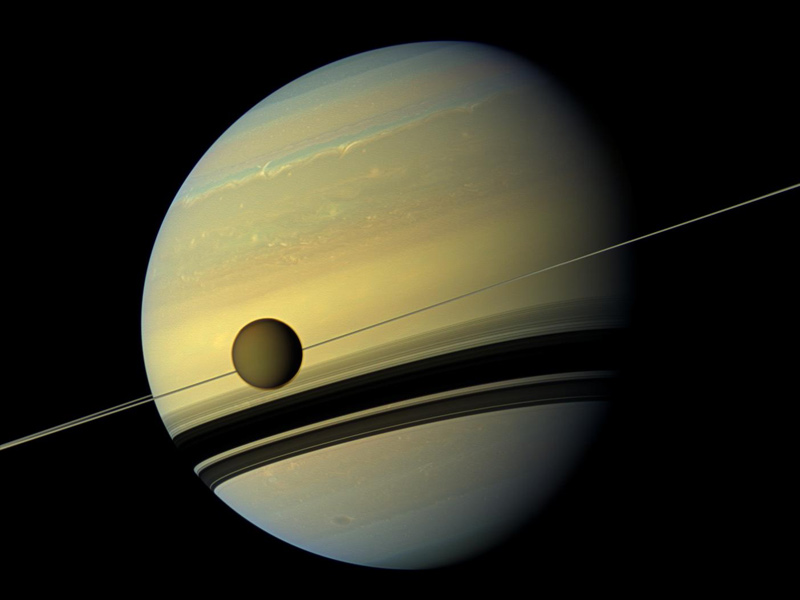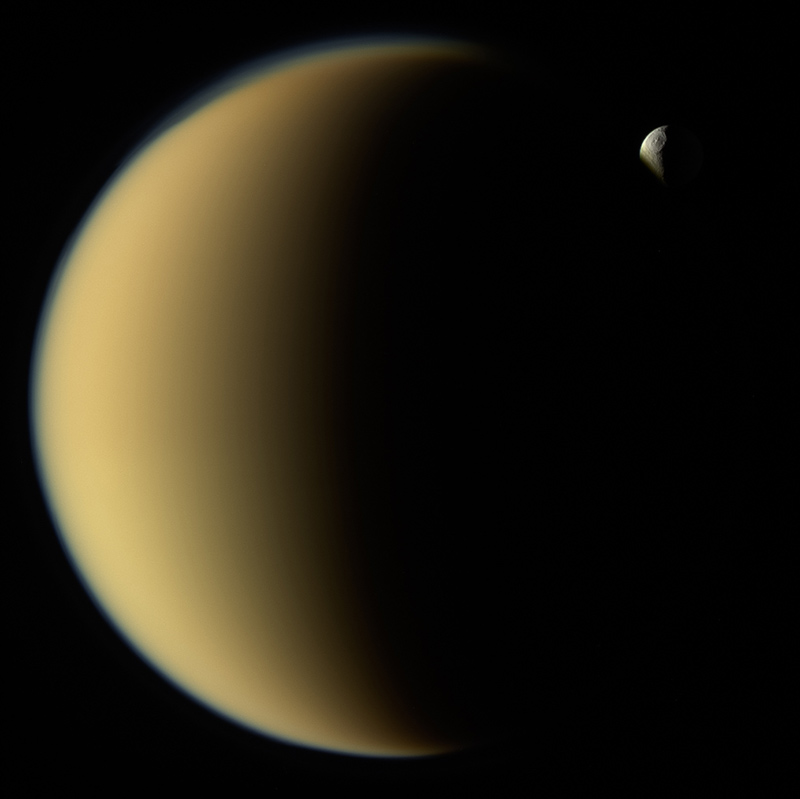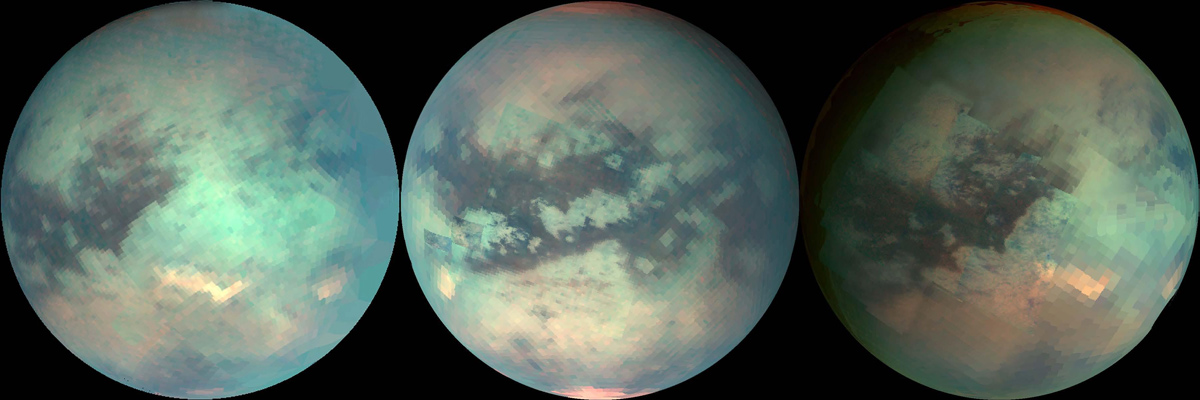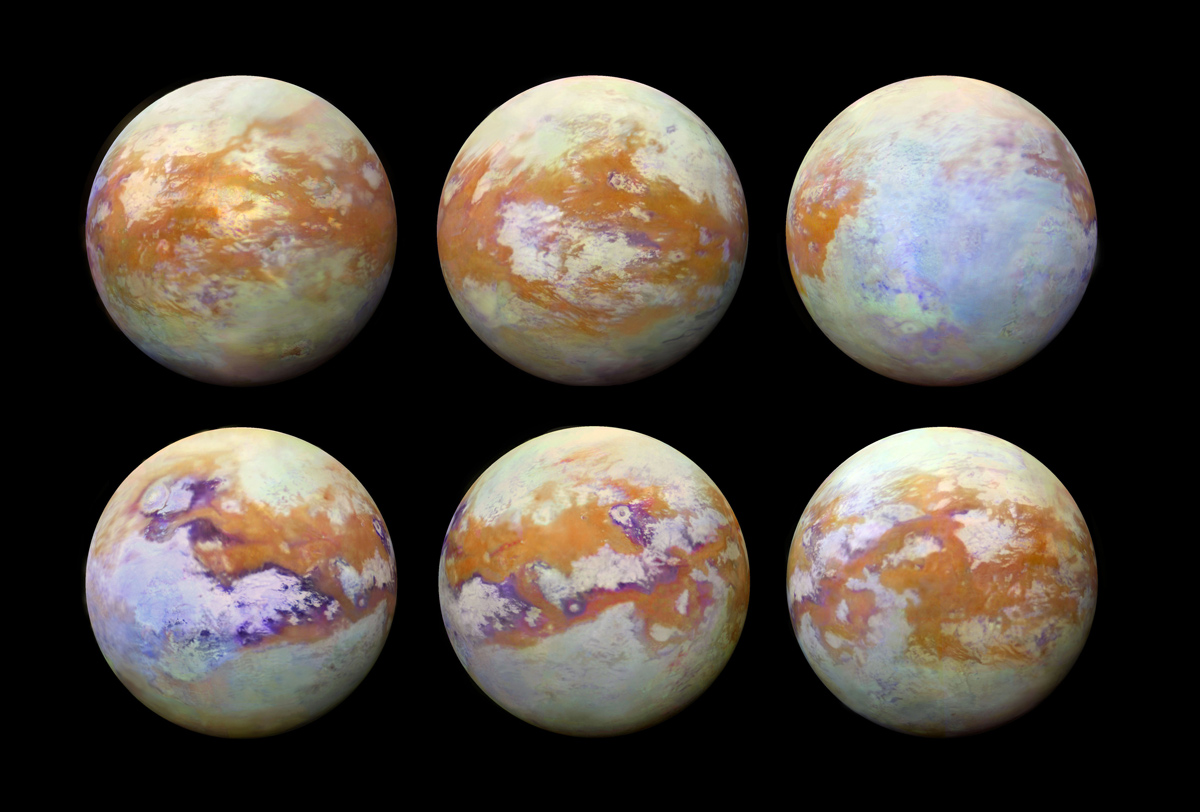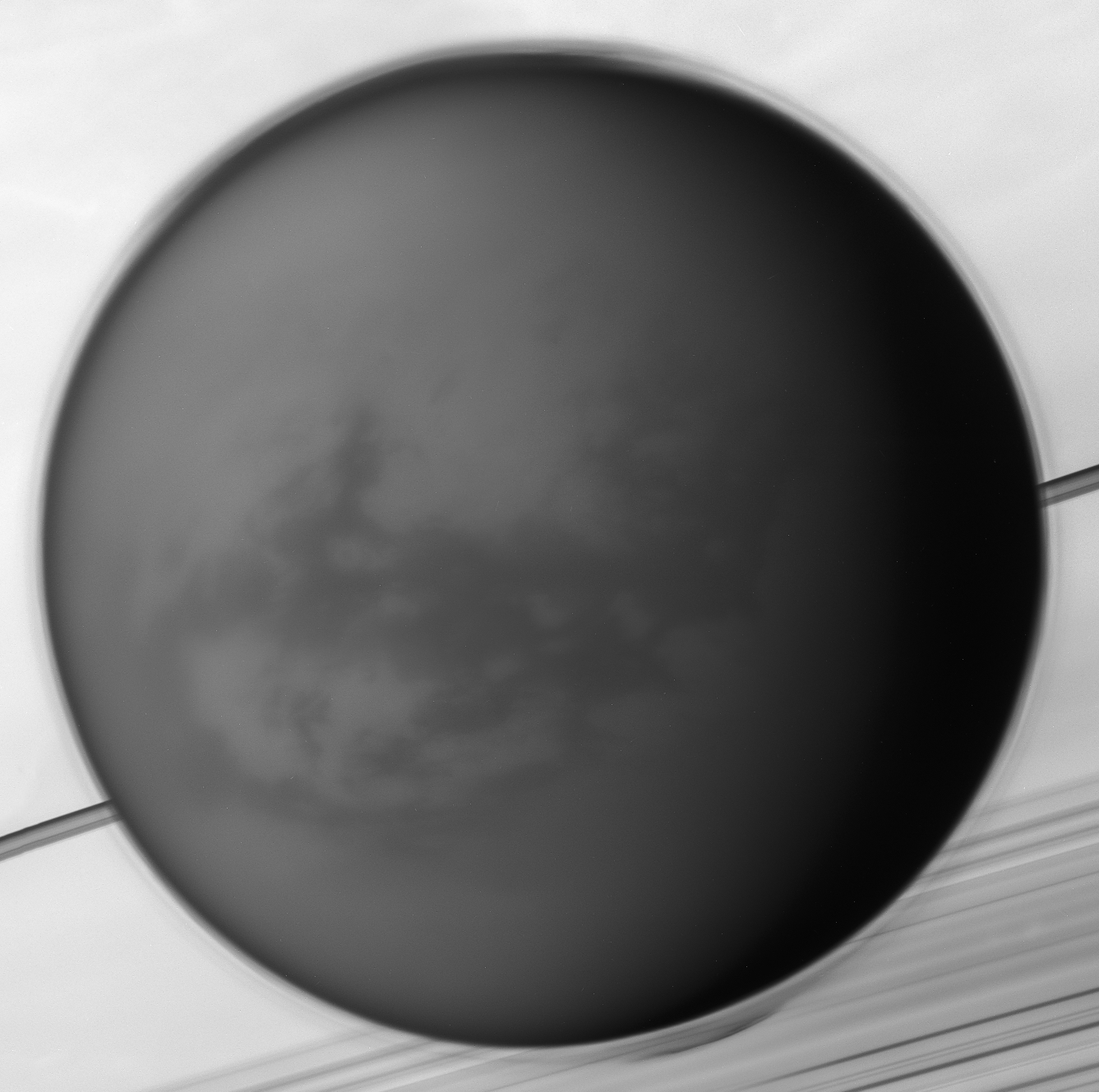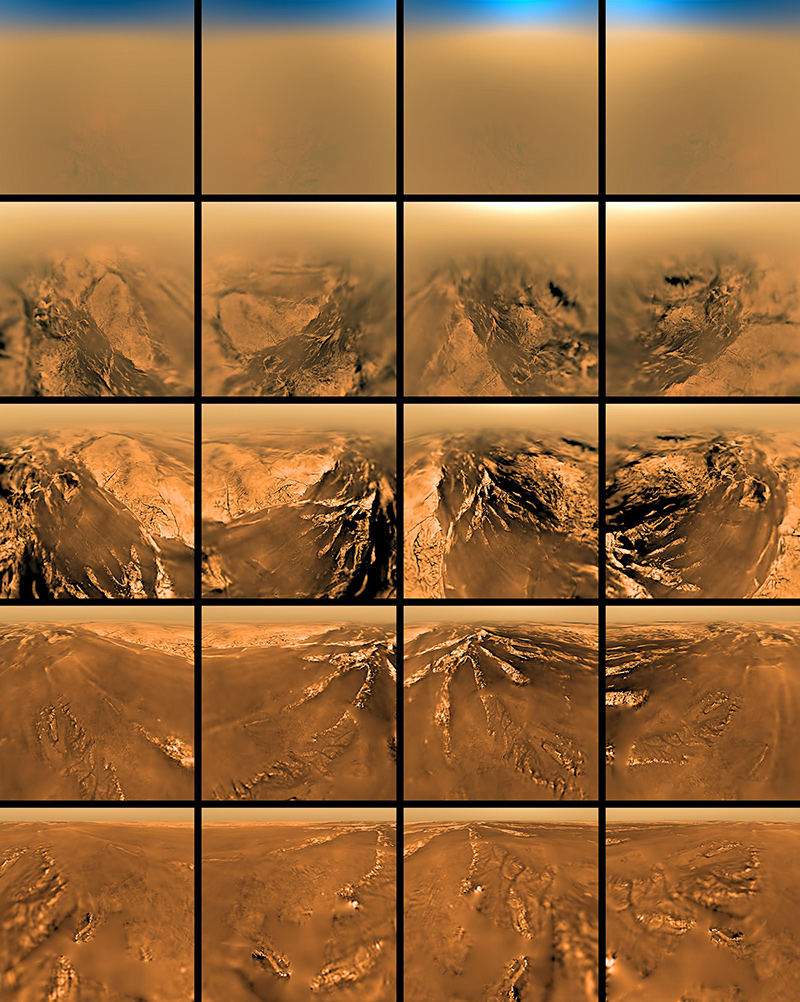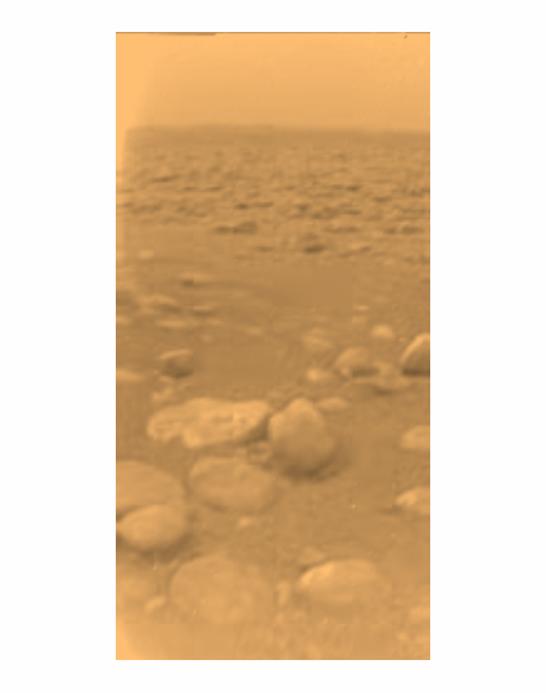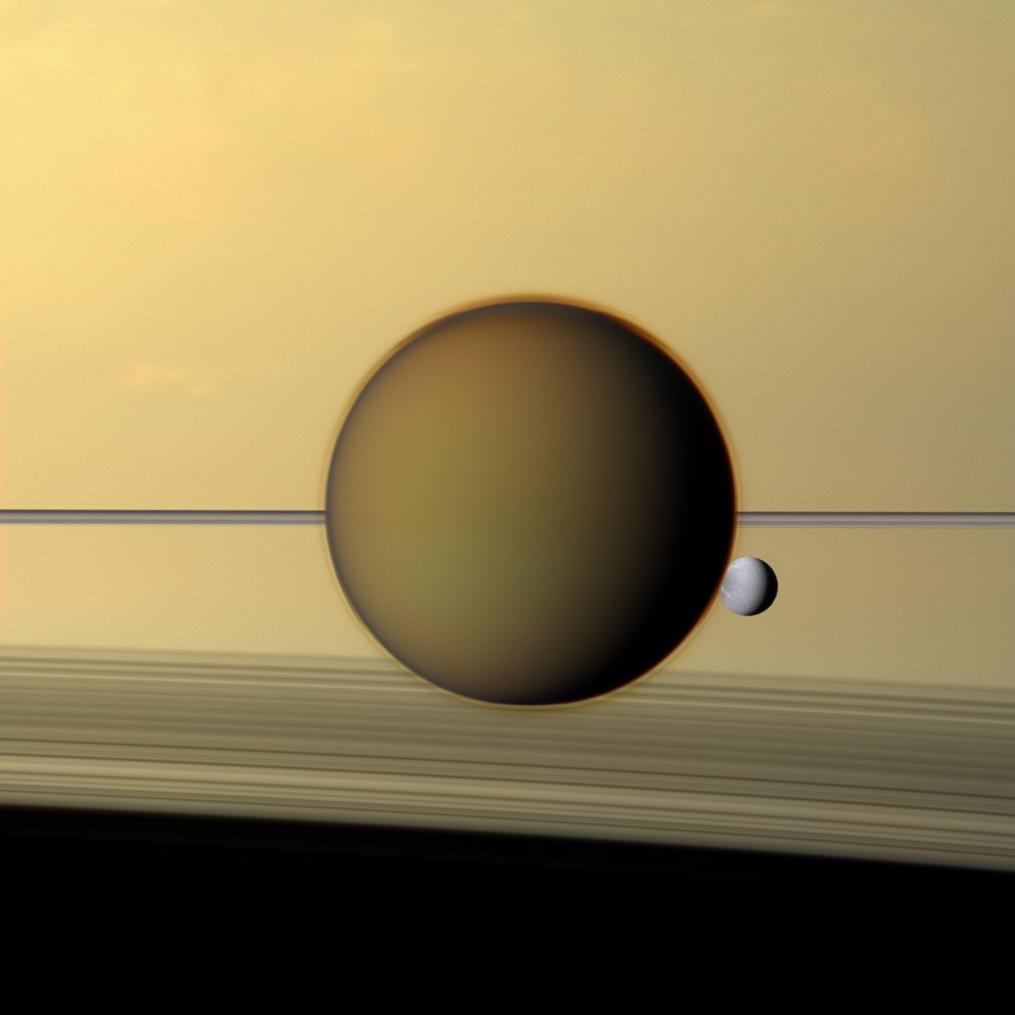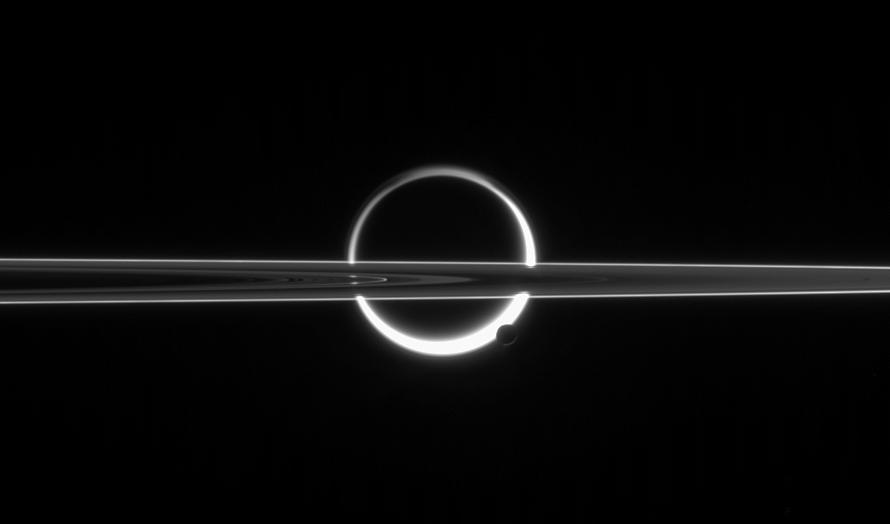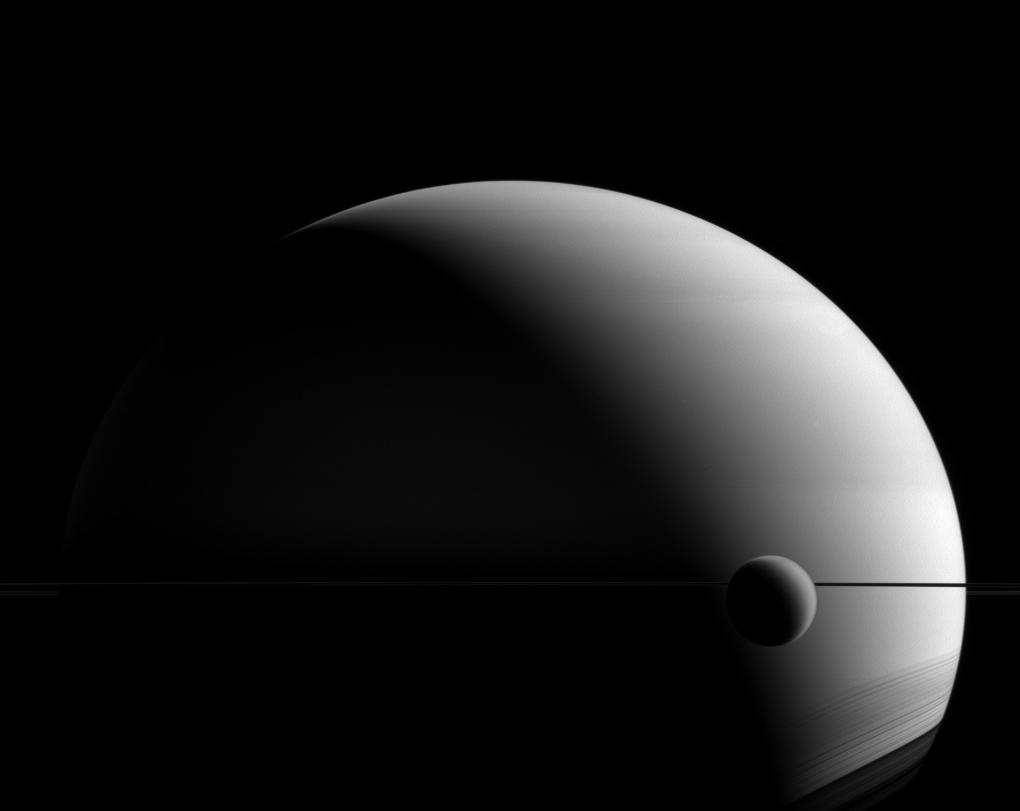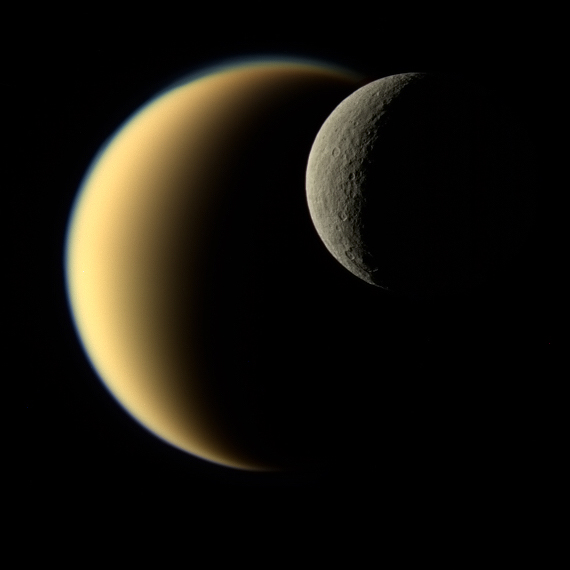Overview: Cassini at Titan
Until the Cassini mission, little was known about Saturn’s largest moon Titan, save that it was a Mercury-sized world whose surface was veiled beneath a thick, nitrogen-rich atmosphere. But Cassini mapped Titan’s surface, studied its atmospheric reactions, discovered liquid seas there and even sent a probe to the moon’s surface, completely rewriting our understanding of this remarkably Earth-like world.
Key Points
◆ Before 2004, we knew very little about Titan other than its size and that it had a dense, nitrogen-rich atmosphere.
◆ Data from Cassini-Huygens revealed Titan has lakes and seas of liquid methane and ethane, replenished by rain from hydrocarbon clouds.
The mission also provided evidence that Titan is hiding an internal, liquid ocean beneath its surface, likely composed of water and ammonia.
Before Cassini-Huygens began its focused study of Saturn's largest moon, we knew Titan as a hazy orange ball about the size of Mercury. Scientists had determined it had a nitrogen atmosphere—the only known world with a dense nitrogen atmosphere besides Earth. But what might lie beneath the smoggy clouds was still largely a mystery.
The Arrival of the Dynamic Duo
NASA's Cassini spacecraft would eventually complete more than 100 targeted flybys of Titan, sending European Space Agency’s Huygens probe to land on the mysterious, alien world—the first landing on a surface in the outer solar system. As it descended for two and a half hours, Huygens took measurements of Titan’s atmospheric composition and pictures of its surface. The hardy probe not only survived the descent and landing, but continued to transmit data for more than an hour on Titan's frigid surface, until its batteries were drained.
Since that historic moment in 2005, scientists from around the world have pored over volumes of data about Titan, sent to Earth by Huygens and Cassini. The information gathered by the dynamic spacecraft duo have revealed many details of a surprisingly Earth-like world and raised fascinating new questions for future study.
We now know that Titan is a world with lakes and seas composed of liquid methane and ethane near its poles, with vast, arid regions of hydrocarbon-rich dunes girdling its equator. And deep below the surface, Titan harbors a large internal ocean.
Seasons on Titan
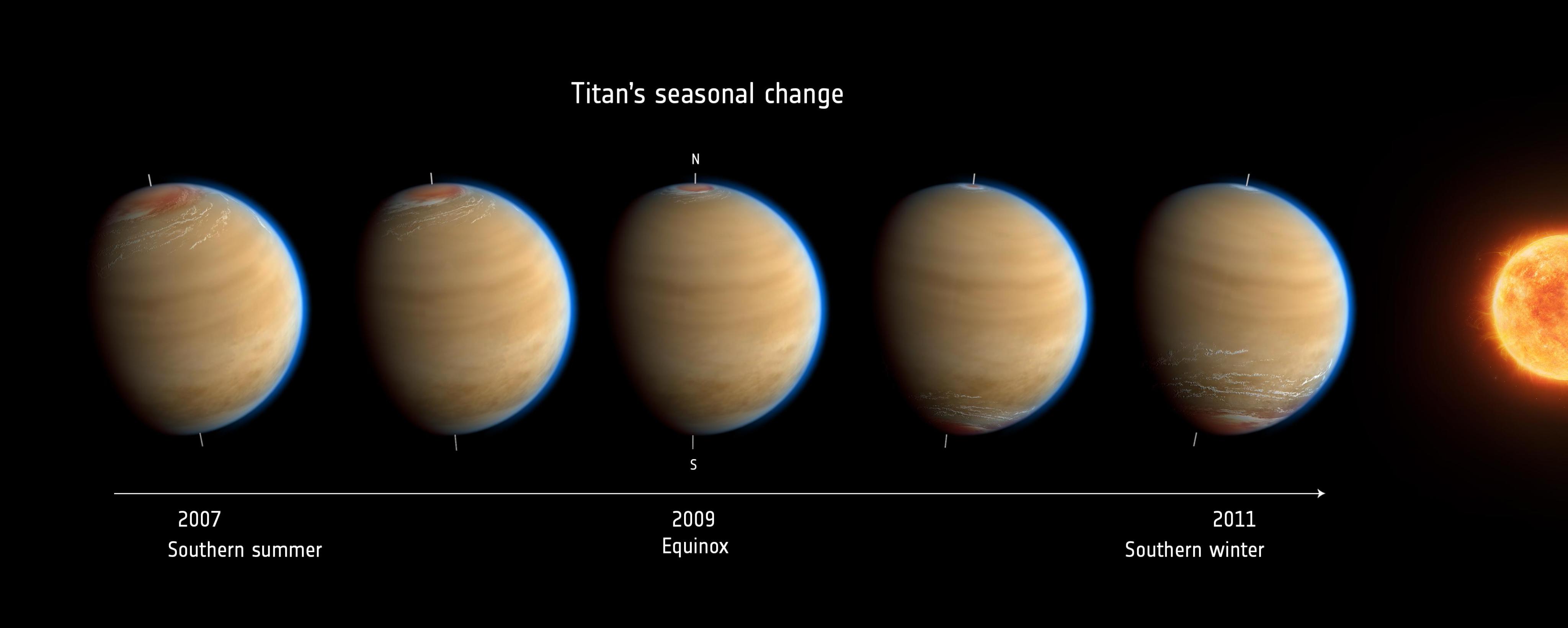
Titan is the only other place in the solar system known to have an Earth-like cycle of liquids flowing across its surface as the planet cycles through its seasons. Each Titan season lasts about 7.5 Earth years. Cassini caught glimpses of the transition from fall to winter at Titan’s south pole—the first time anyone has seen the onset of a Titan winter—and watched as summer came to the north. “We're monitoring the weather on Titan, watching for predicted methane rainstorms at the north pole,” Linda Spilker, Cassini project scientist at NASA’s Jet Propulsion Laboratory, said at the time.
Deserts and Seas
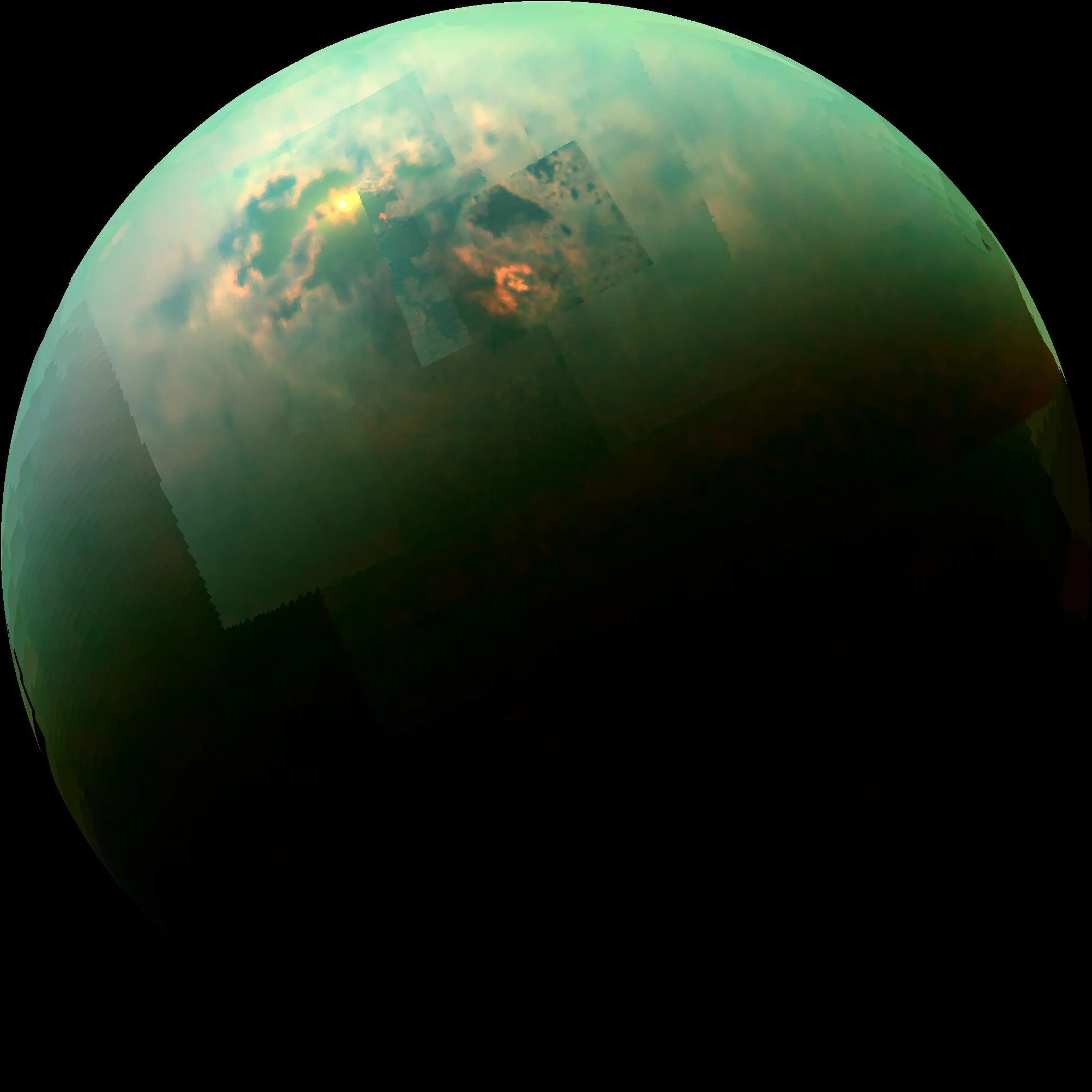
Rippling sand dunes, like those in Earth's Arabian desert, can be seen in the dark equatorial regions of Titan. Scientists think the sand is not made of silicates as on Earth, but of solid water ice coated with hydrocarbons that fall from the atmosphere. Images show Titan's icy dunes are gigantic, reaching, on average, 0.6 to 1.2 miles (1 to 2 kilometers) wide, hundreds of miles (kilometers) long and around 300 feet (100 meters) high.
The variety of features on Titan’s surface surprised and delighted scientists and the public alike. “I am intrigued by how many features on Titan’s surface are remarkably Earth-like,” Spilker said, “including hydrocarbon rivers, lakes and seas, and equatorial dunes, with liquid methane playing the role on Titan that water plays on Earth.”
An Unusual Atmosphere
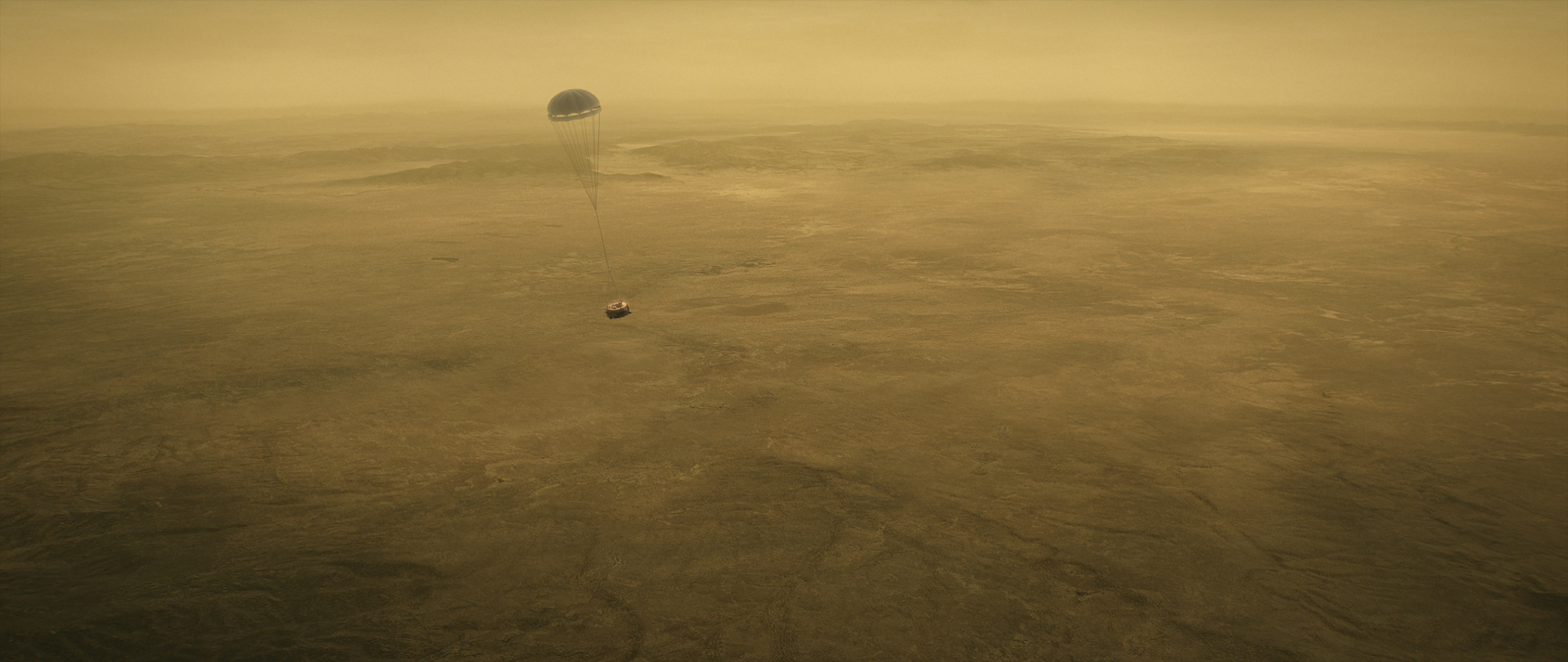
The Huygens probe made the first direct measurements of Titan's lower atmosphere. Data returned by the probe included altitude profiles of the gaseous constituents, isotopic ratios and trace gases (including organic compounds). Huygens also directly sampled aerosols in the atmosphere and confirmed that carbon and nitrogen are their major constituents.
Cassini followed up Huygens' measurements from space, detecting other chemicals that included propylene (a chemical used to make household plastic) and poisonous hydrogen cyanide, in Titan's atmosphere. The variety of chemicals observed indicates a rich and complex chemistry originating from methane and nitrogen and evolving into complex molecules, eventually forming the smog that surrounds the icy moon. It is believed that methane and ethane rain falls from clouds in Titan's atmosphere, but the ultimate source of the methane is still unclear. “The most interesting question is why is there still lots of methane in the atmosphere of Titan? Where's it coming from?” said Jonathan Lunine, a Cassini interdisciplinary scientist from Cornell University.
Underground Ocean
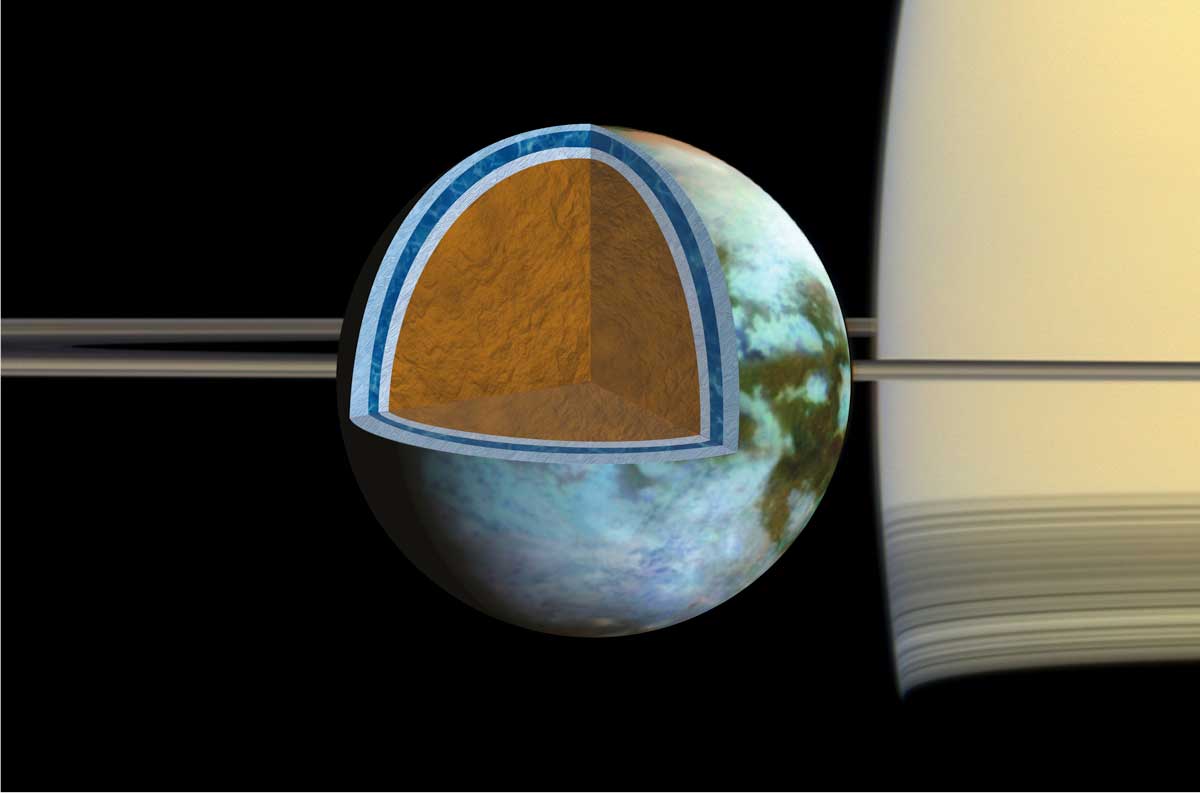
Cassini's numerous gravity measurements of Titan revealed that this moon is hiding an internal, liquid water and ammonia ocean beneath its surface. Huygens also measured radio signals during its descent that strongly suggested the presence of an ocean 35 to 50 miles (55 to 80 kilometers) below the moon's surface. The discovery of a global ocean of liquid water adds Titan to the handful of worlds in our solar system that could potentially contain habitable environments.

